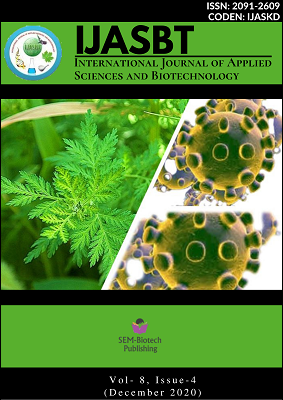Repurposing Artemisia annua L. Flavonoids, Artemisinin and Its Derivatives as Potential Drugs Against Novel Coronavirus (SARS –nCoV) as Revealed by In-Silico Studies
DOI:
https://doi.org/10.3126/ijasbt.v8i4.33667Keywords:
SARS-nCoV, Artemisinin, Artesunate, Remdesvir, in-silico analysisAbstract
Coronavirus-induced COVID-19, a highly contagious respiratory illness first originated from Wuhan city of Hubei province, China, and has affected 235 countries across the globe. The COVID-19 is mainly transmitted by the droplets of an infected person when they cough, sneeze, or exhale. Currently, there are no specific drugs licensed for the effective treatment or prevention of COVID-19 and the treatment is mainly focused on controlling symptoms. Identification of small bioactive plant molecules that specifically target whole viral replication apparatus have great potential towards the development of antiviral drug discovery. This communication describes our current understanding of SARS-nCoV interaction with some herbal bioactive compounds of A. annua including sesquiterpenes, flavonoids and phenolics using in silico approach.
Int. J. Appl. Sci. Biotechnol. Vol 8(4): 374-393
Downloads
940
567




